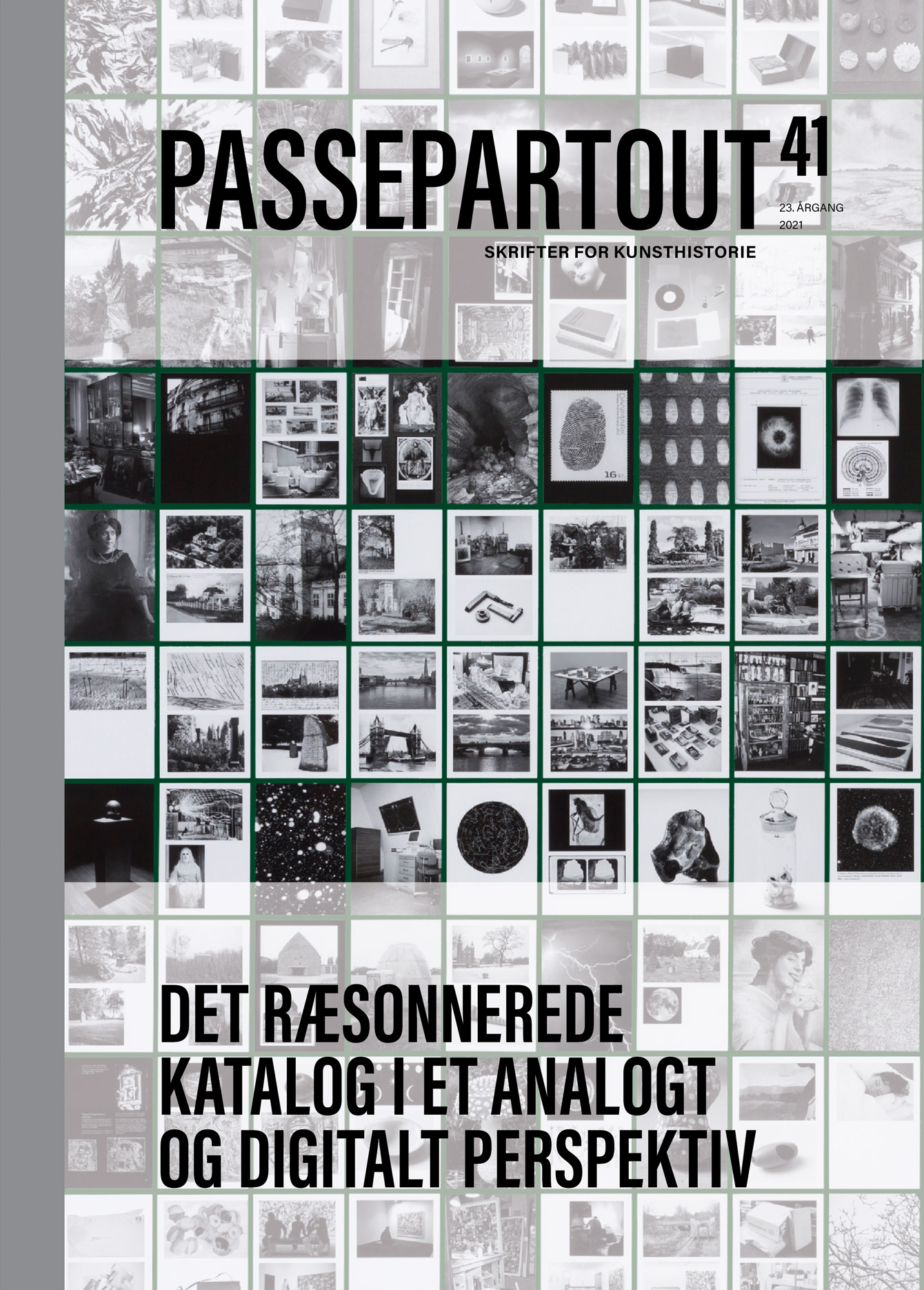Vad ska vi ha alla bilder till?
Katalogiska utmaningar i skärningspunkten mellan kulturarvsförvaltning och humanistisk forskning
Nøgleord:
Metadata behov, online kataloger, databaser, bildsamlingar, humanistiska forskare, metadataproduktionResumé
Den här studien, baserad på en enkät bland metadataproducenter i museer, arkiv och bibliotek samt humanistiska forskare i Sverige, visar att det finns avgörande skillnader när det gäller förståelser av vad bilder är och vad de ska användas till. Studien visar på vikten av att medvetandegöra metadataproduktionen i bildsamlingar och behovet av att skapa metadata med större mångfald och variation.
Referencer
Armitage, L. H. and Enser, P. G. B.: “Analysis of user need in image archives” in Journal of Information Science, 23(4), 1997, pp. 287–299.
Atwater, E.: “The Changing Form of the Catalogue Raisonné: Hurdles of Transitioning from Print to Web” in Art Documentation: Journal of the Art Libraries Society of North America, 31(2), 2012, pp. 186–198.
Baca, M. et al.: Cataloging Cultural Objects. A Guide to Describing Cultural Works and Their Images. Chicago: American Library Association, 2006.
Baca, M. (red.): Introduction to Metadata. 3rd edn. Los Angeles, Getty Publications, 2016.
Beaudoin, J. E.: “Visual Materials and Online Access: Issues Concerning Content Representation”, in Art Documentation: Journal of the Art Libraries Society of North America, 26(2), 2007, pp. 24–28.
Birkin, J.: “Institutional metadata and the problem of context” in Journal of Digital Culture and Society, 6(2), 2020, pp. 19–36.
Capurro, C. and Plets, G.; “Europeana, EDM, and the Europeanisation of Cultural Heritage Institutions” in Journal of Digital Culture and Society, 6(2), 2020, pp. 163–189.
Cardinali, M.: “Digital Tools and Technical Views: The Intersection of Digital Art History and Technical Art History in a Digital Archive on the Painting Technique of Caravaggio and His Followers in Visual Resources, 35(1–2), 2019, pp. 52–73.
Carpo, M. : “Big Data and the End of History” in International Journal for Digital Art History, (3), 2018, pp. 20–35.
Chen, H. : “An analysis of image queries in the field of art history” in Journal of the American Society for Information Science and Technology, 52(3), 2001, pp. 260–273.
Christensen, H. D. and Pedersen, M. H.: “Museum Communication between Enlightenment and Experience An Introduction” in Nordisk Museologi, (1), 2019, pp. 5–10.
Curtis, N. (ed.): The pictorial turn. London, Routledge, 2011.
Dahlgren, A.: ”Tankar om tillgänglighet och fotografier i arkiv”in Dahlgren, A. and Snickars, P. (eds.), I bildarkivet: om fotografi och digitaliseringens effekter, Stockholm, Mediehistoriskt arkiv, 13, 2009, pp. 59–89.
Dahlgren, A.: ”Dated Photographs: The Personal Photo Album as Visual and Textual Medium” in Photography and Culture, 3(2), 2010, pp. 175–194.
Dahlgren, A.: Ett medium för visuell bildning: kulturhistoriska perspektiv på fotoalbum 1850-1950. Göteborg, Makadam förlag, 2013.
D’Alleva, A.: Methods & theories of art history, 2. ed. London, Laurence King, 2012.
Digitization and IPR in European Museums. (2020). NEMO, Network of European Museum Organisations. Available at: www.ne-mo.org.
Edwards, E.: Photographs, Objects, Histories. On the Materiality of Images. London, Routledge, 2004.
Elkins, J. (ed.): Visual practices across the university, München, Wilhelm Fink Verlag, 2007.
Gil-Fuentetaja, I. and Economou, M.: ”Communicating Museum Collections Information Online: Analysis of the Philosophy of Communication Extending the Constructivist Approach” in Journal on Computing and Cultural Heritage, 12(1), 2019, pp. 1–16.
Harris, J.: The new art history: a critical introduction, London, Routledge, 2007.
Hollink, L. et al.: ”Classification of user image descriptions” in International Journal of Human-Computer Studies, 61(5), 2004, pp. 601–626.
Jordanova, L. J.: The look of the past: visual and material evidence in historical practice. Cambridge, Cambridge University Press, 2012.
Lager Vestberg, N.: ”Flytande fotografier – originalitet och upphovsrätt i det digitala arkivet” in Dahlgren, A. and Snickars, P. (eds.), I bildarkivet: om fotografi och digitaliseringens effekter. Stockholm: Mediehistoriskt arkiv, 13, 2009, pp. 33–58.
Manghani, S.: Image studies: Theory and practice. London, Routledge, 2013.
Müller, M. G., Bateman, J. A. and Seizov, O.: ”Visual archives in the digital age” in Visual Studies, 31(2), 2016, pp. 93–94.
Nauta, G. J., Heuvel, W. van den and Teunisse, S.: Europeana DSI 2– Access to Digital Resources of European Heritage. D4.4. Report on ENUMERATE Core Survey 4, 2017. Available at: https://pro.europeana.eu/files
Orna, E. and Pettitt, C.: Information management in museums, 2nd ed. Aldershot, Hants, Gower, 1998.
Pepi, M.: ”Is a Museum a Database? Institutional Conditions in Net Utopia” in E-Flux Journal, (60), 2014. Available at: www.e-flux.com/journal/60/61026/is-a-museum-a-database-institutional-conditions-in-net-utopia/.
Prown, J. D.: ”Mind in Matter: An Introduction to Material Culture Theory and Method” in Winterthur Portfolio, 17(1), 1982, pp. 1–19.
Riley, J.: Understanding metadata. What is metadata and what us it for? Baltimore: National Information Standards Organization (NISO), 2017. Available at: https://www.niso.org/publications/understanding-metadata-2017.
Schneider, S. and Kohle, H.: ”The Computer as Filter Machine: A Clustering Approach to Categorize” in Artl@s Bulletin, 6(3), article 6, 2017.
Seeman, D. and Dean, H.: ”Open Social Knowledge Creation and Library and Archival Metadata”in KULA: Knowledge Creation, Dissemination, and Preservation Studies, 3, 2019.
Tasovac, T., Chambers, S. and Tóth-Czifra, E.: Cultural Heritage Data from a Humanities Reserahc Perspective: A DARIAH Position Paper. hal-02961317. HAL archives-ouvertes, 2020. Available at: hal.archives-ouvertes.fr.
Wolff, J.: The social production of art. Reprinted, Basingstoke, Macmillan Education (Communications and culture), 1988.
Woodward, E.: ”Metadata for Image Collections” in American Libraries, 45(6), 2014, pp. 42–44.





